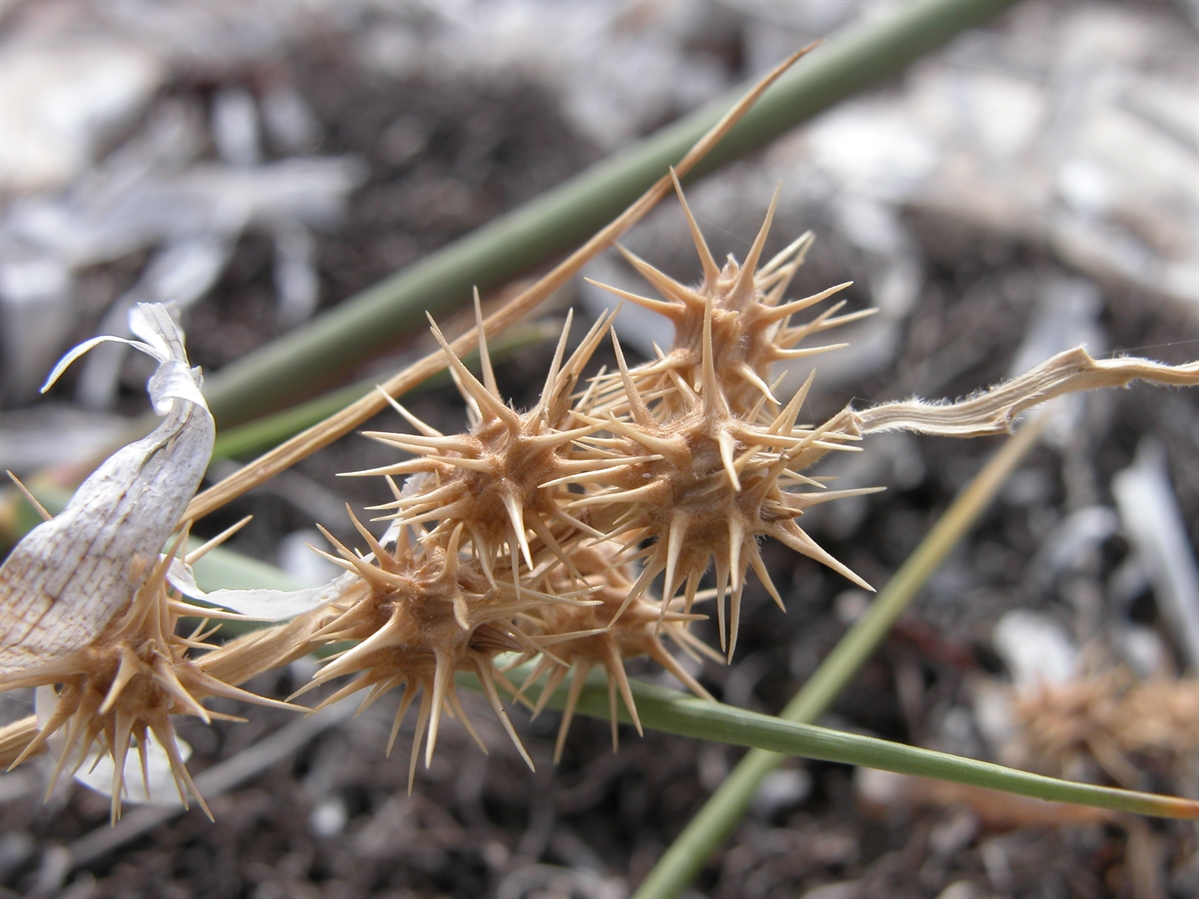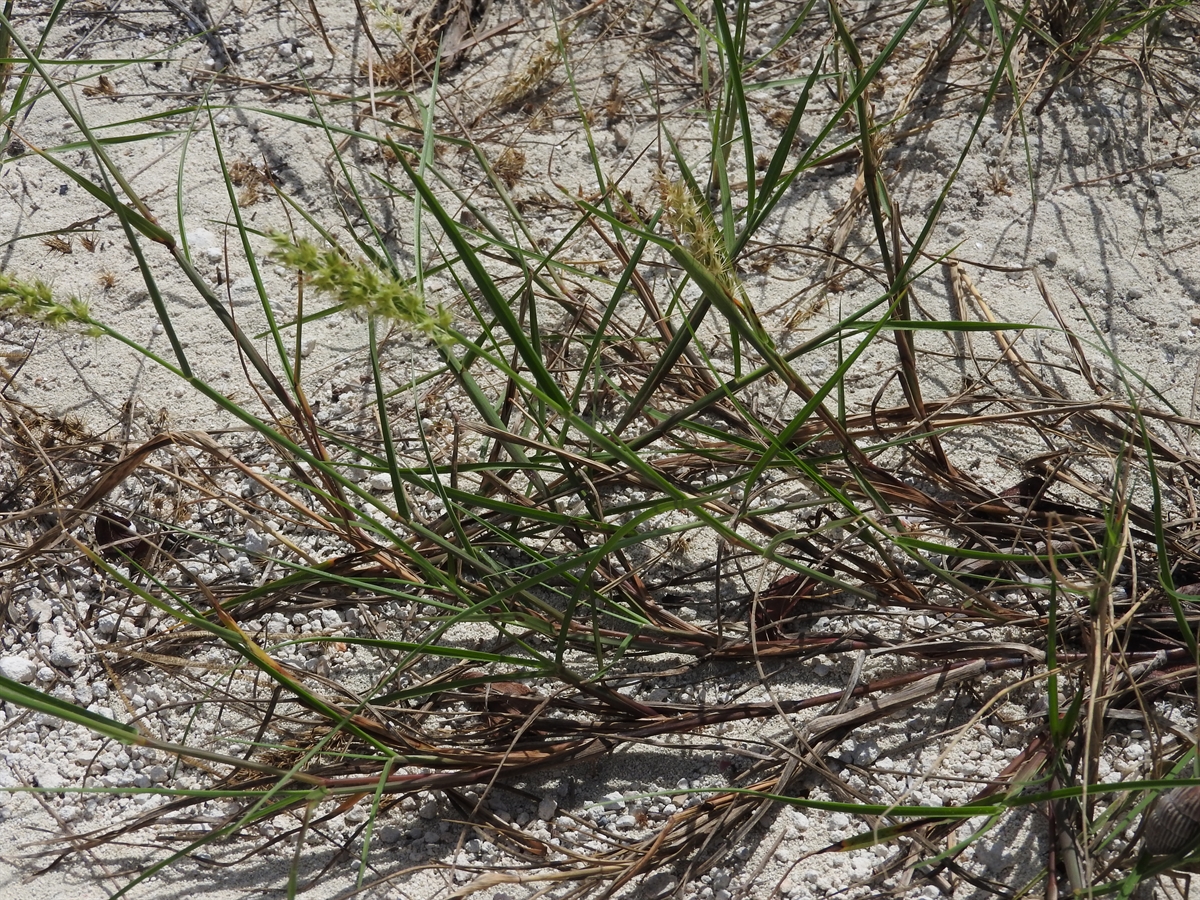Habit: Cenchrus spinifex grows as a decumbent annual or biannual to 90 centimeters in length with a diameter to 0.5 cm and can form large dense clumps. The leaves are arranged alternately with a sheath extending along the stem that is pubescent along its edge. At the point of divergence of the leaf sheath to the leaf blade is a small ligule. The leaves are parallel veined and to 20 centimeters in length.
The imperfect, incomplete, zygomorphic flowers are arranged in terminal panicles. The flowers are highly modified without identifiable structures such as the calyx or corolla. Each flowering unit is a spikelet at the base of which are 2 yellow brown structures called glumes. In the spikelet, there are 2 flowering structures each is subtended by 2 additional structures (lemma and palea). The entire spikelet surrounded by bracts that are sharpened into spines. In each flower within the spikelet there are 3 stamens. The fruit is a caryopsis that turns black at maturity. The entire spikelet/bur is the dispersal unit.
Habitat: Cenchrus spinifex grows in Dunes and Holocene sand substrate Palm Woodlands.
Distribution: Cenchrus spinifex occurs on all island groupings within the Lucayan Archipelago as well as the entire Caribbean region, Florida, and Central and South America.
Medicinal/Cultural/Economic usage: Cenchrus spinifex is not known to be used medicinally in the Lucayan Archipelago .

